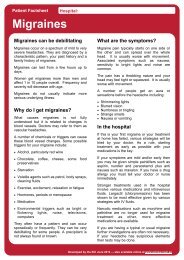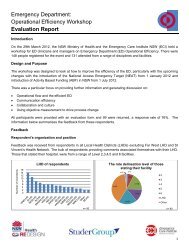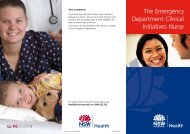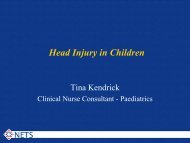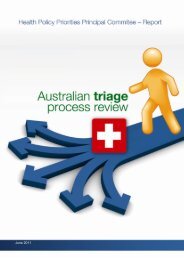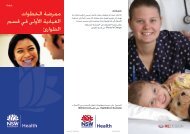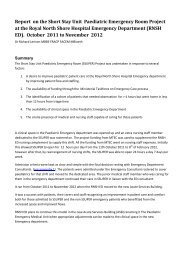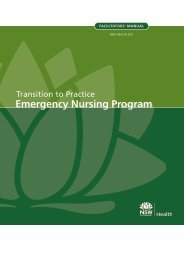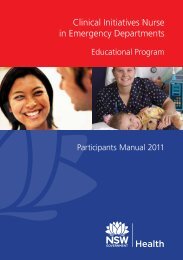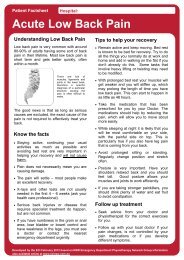Emergency Department Models of Care 2012 - NSW Health
Emergency Department Models of Care 2012 - NSW Health
Emergency Department Models of Care 2012 - NSW Health
- No tags were found...
Create successful ePaper yourself
Turn your PDF publications into a flip-book with our unique Google optimized e-Paper software.
Benefits <strong>of</strong> the model ■ Early diagnosis – patients are seen initially by a senior ED Physician to establish amanagement plan and expected disposition■■■■Reduced duplication in assessment and diagnosticsImproved turnaround times for diagnostics services and specialist consultationsReduced delays in transferring patients to the inpatient unitMinimised delays to accessing clinical equipment as all bed areas are set up instandardised way.Challenges ■ Ensuring sufficient availability <strong>of</strong> senior medical staff will require devolution <strong>of</strong> lower levelclinical tasks and support to other providers; and/or increasing senior medical staffingnumbers■■■■■Changing the practice <strong>of</strong> Junior Medical Officers reviewing Acute <strong>Care</strong> patients beforeSenior Medical Officers.Appropriate use <strong>of</strong> standardised clinician pathways, for example, a chest pain pathway tooptimise patient clinical care and risk stratification for all patientsImplementing a standardised clinical handover tool/process that encompasses handoverwithin the ED and then to specialty teams and inpatient unitsDelays in transferring patients to the ward because there is a culture <strong>of</strong>:- consulting teams requiring a full assessment and diagnosis before accepting patients tothe inpatient unit- negotiating patient transfers with ward staff, for example, to accommodate ward staffmeal breaks- patients deemed too sick for the ward but not sick enough for a High Dependency unit- patients kept overnight in ED due to lack <strong>of</strong> overnight delegation <strong>of</strong> ward transferdecisions (to accommodate referral calls ‘en bloc’ being made to admitting consultantsin morning).Poor engagement from diagnostic services regarding timely access to services and results.Case for implementationAll EDs should have an area which allows for the care <strong>of</strong> unstable, complex patients. Thefollowing questions are important when reviewing your acute model <strong>of</strong> care:■■■■■■■Does your ED have an appropriate area for treatment and monitoring <strong>of</strong> unstable,complex, high acuity patients?Does your ED experience delays in moving patients to monitored beds due to acute bedsbeing occupied by less complex, less acute patients?Are delays experienced in completing diagnostics, and the formulation <strong>of</strong> managementplans and disposition decisions?Is there duplication <strong>of</strong> work between senior and junior medical staff in the diagnosis andmanagement <strong>of</strong> unstable, complex, high acuity patients?Are delays experienced by the Inpatient Team reviews <strong>of</strong> acute patients?Are delays experienced in transferring patients to an inpatient unit?Are clinical pathways in place for the management <strong>of</strong> common presentations to ED?PAGE 22 <strong>NSW</strong> HEALTH <strong>Models</strong> <strong>of</strong> <strong>Emergency</strong> <strong>Care</strong>




